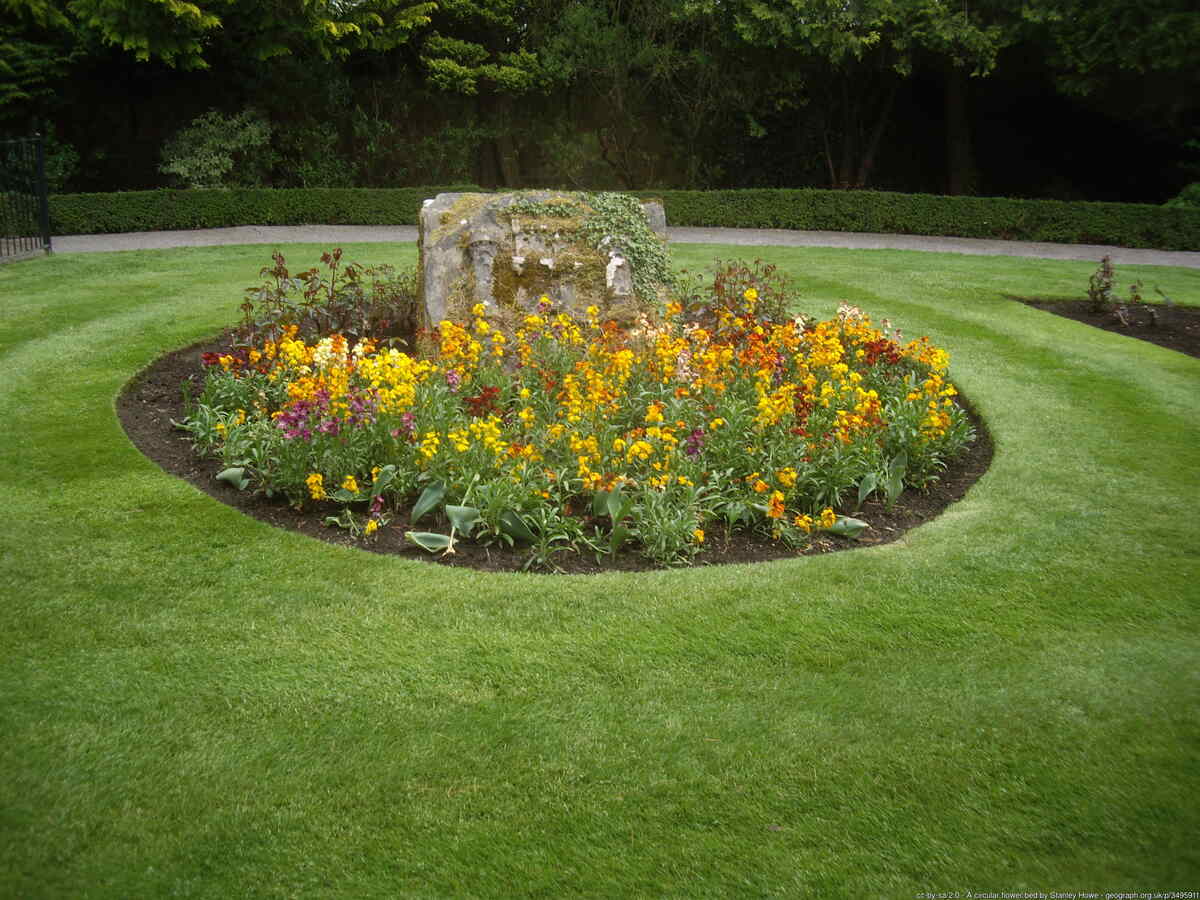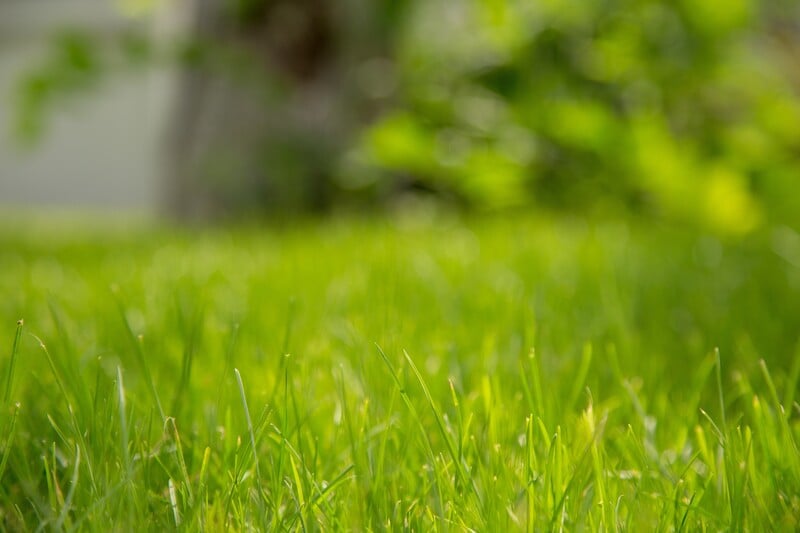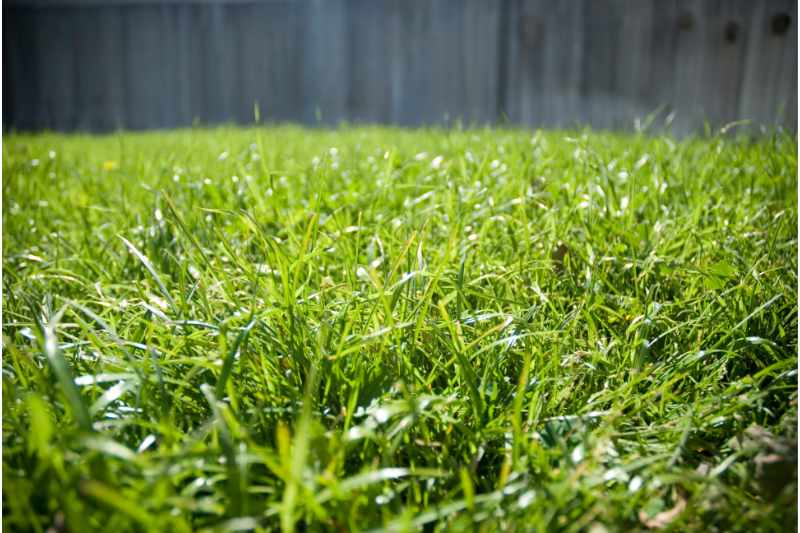
The easiest way to keep Bermudagrass out of flower beds is to avoid planting this turfgrass altogether. But for many gardeners and homeowners in the South, Bermudagrass is already well established in their yards. So, how can you protect your prized flowers from this pesky weed? From buffer zones to solarization, we’ll explain how to keep Bermudagrass out of your flower beds.
We’ll also discuss tips on how to respond if you already see Bermudagrass growing in your flower beds. We will cover:
How to Keep Bermudagrass Out of Flower Beds

Although Bermudagrass lawns may be great, this warm-season grass is also an aggressive, invasive weed when it creeps into raised beds, vegetable gardens, or shrub borders.
Bermudagrass earns its invasive description by its three-way attack: It spreads by underground stems called rhizomes, by above-ground stems called stolons or runners, and by seed. Before worrying about how to get rid of Bermudagrass in flower beds, let’s go through how to prevent it from happening.
Here’s how to stop Bermudagrass from spreading in the first place:
1. Create a Bermudagrass Weed Barrier
- Use either plastic or metal edging that is at least 10 inches tall. That allows you to sink the edging into a 6-inch-deep trench, with 4 inches above the soil line.
- Create a trench at about 6 inches deep. The stems of Bermudagrass run about 6 inches deep, so it should deter an underground invasion.
- Add 4 inches of edging above the soil. Raised garden beds should keep the runners from going over the top. However, the runners are a galloping bunch. They’ve been known to run across a 3-foot-wide sidewalk to get to the other side.
- Mow alongside the edging regularly. Your barrier will be no good if the Bermudagrass grows tall and develops seed. Grass seeds will drop to the ground or be spread by wind, birds, and other wildlife and can end up in your garden bed. Keep the grass at 1 1/2 to 2 1/4 inches inches tall, well below the 4-inch edging barrier.
Tip: You can also give extra protection to your garden bed by applying mulch — it prevents existing weed seeds from sprouting and new ones that might fall from reaching the soil.
2. Install a Grass Buffer Zone
Whether you’re creating a new garden bed or protecting an existing one, a buffer zone can help keep the Bermudagrass at bay. Here’s how it works:
- The buffer zone goes between the garden bed and the lawn, acting as a trap for encroaching Bermudagrass before it reaches the edged garden bed. This makes it easy to spot and pull Bermudagrass before it spreads too far.
- Consider using a herbicide or weed killer to get a handle on the Bermudagrass. The non-selective herbicide is sold as Round Up or Ornamec, among other brands. Selective herbicides act specifically as weed control for Bermudagrass without killing other grass.
Pro tip: Double-check if the product is labeled for use on Bermudagrass, and always read and follow the label directions.
A reminder: Anytime you see Bermudagrass poking through the buffer zone, hand pull it or treat it with a post-emergent herbicide, such as glyphosate. Remember glyphosate is a non-selective herbicide, so it may also kill desirable plants. Always read and follow the label directions.
3. Invest in Eco-Friendly Solutions

Don’t want to use synthetic chemicals to control Bermudagrass? Sheet mulching and covering with plastic are low-cost, DIY, eco-friendly solutions, but the process is slow.
Smother Bermudagrass With Cardboard or Landscape Fabric
- Mow or use a weed eater to cut the grass as close to the ground as possible.
- Wet the area.
- Place a single layer of cardboard or landscape fabric over the entire area.
- Overlap the edges of the chosen material by about 6 inches to prevent the grass from creeping through to reach the light.
- Use lawn staples to hold it in place, and add a couple of inches of mulch (like wood chip mulch, for example) over it.
- Eventually, the cardboard will disintegrate, smothering Bermudagrass as it does.
Cook Bermudagrass With Plastic
To cook up the Bermudagrass, you can use a piece of clear plastic (this process is called solarization) or an opaque plastic (what is commonly known as occultation).
This is how occultation goes:
- Wet the area to be covered.
- Lay black polyethylene over the Bermudagrass in summer.
- Leave it there for six to eight weeks to kill the existing grass and root system.
- Keep it as close to the ground as possible, without gaps or holes; otherwise, Bermudagrass will find a way to emerge from the black plastic.
For the solarization process, the difference is minimal:
- Mow with a lawn mower or weed-whack the Bermudagrass and weeds as close to the ground as possible.
- Wet the area.
- Place clear UV plastic on top of the cleared area.
- The clear plastic should extend 24 to 30 inches beyond where the Bermudagrass is.
4. Get Rid of Bermudagrass in Flower Beds
In case the Bermudagrass weeds have already invaded your garden bed, you can opt for two routes:
- Hand-pull the Bermudagrass. This is a more eco-friendly solution and works well if the weeds are not abundant yet.
- Spray selective herbicides. Selective grass herbicides like sethoxydim and fluazifop-P-butyl work as a Bermudagrass killer for flower beds, keeping your veggies or flowers safe.
If Bermudagrass isn’t the only garden invader, check out our article “How to Get Rid of Weeds in Flower Beds“.
FAQ About Bermudagrass in Flower Beds
Can Vinegar Kill Bermudagrass?
Vinegar can dry up and kill the exposed grass blades, but it won’t get rid of the roots and rhizomes. So a vinegar weed killer is more of a temporary solution for weeds, but not entirely effective.
Why is Bermudagrass Bad for Flower Beds?
As Bermudagrass spreads, it can quickly overwhelm or strangle desirable flowers or veggies. Plus, turfgrass in a flower bed gives it an unkempt look.
What Can You Plant Instead of Bermudagrass?
The best alternative depends on where you are in the country. St. Augustine, Zoysia, Buffalograss, or tall fescue may be good choices. For the best recommendation on turfgrass recommended for your area, contact your local Cooperative Extension office.
Call a Lawn Pro
Contact a local landscape pro to help manage the lawn, no matter what kind of grass you grow. The pro can keep Bermudagrass in check by trimming along the buffer zone.
Main Image Credit: Stanley Howe / Geograph / CC BY-SA 2.0